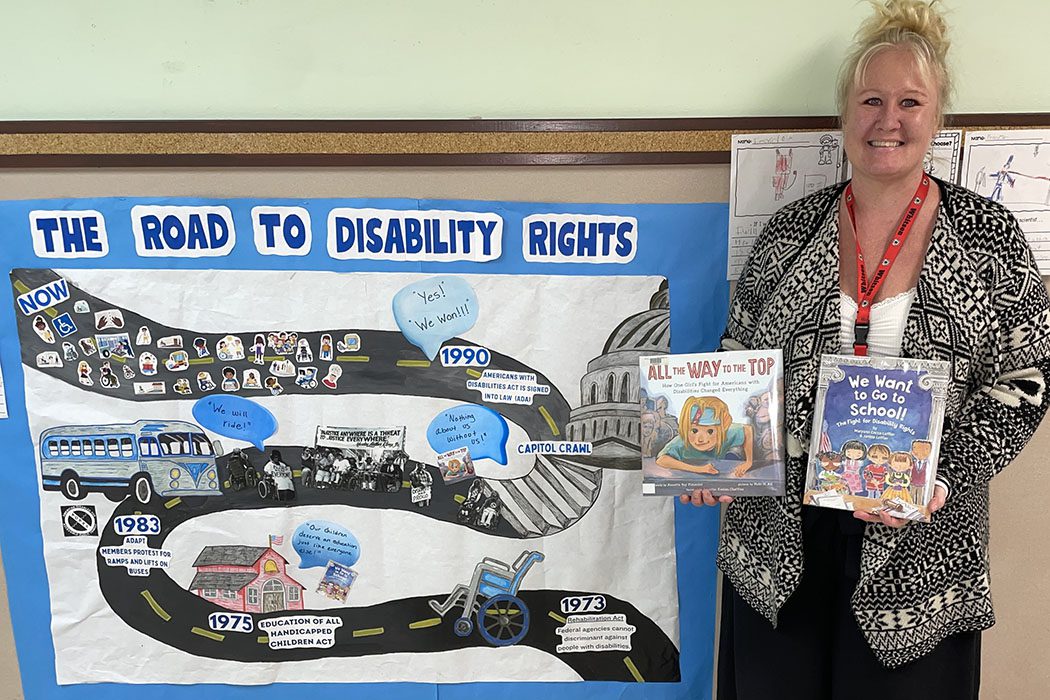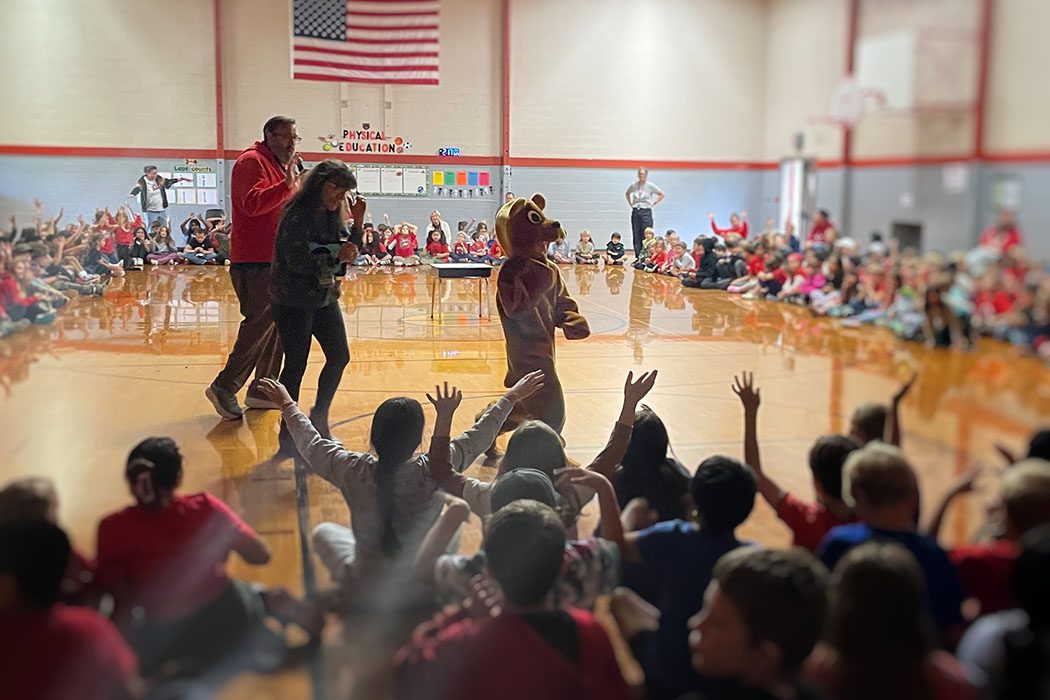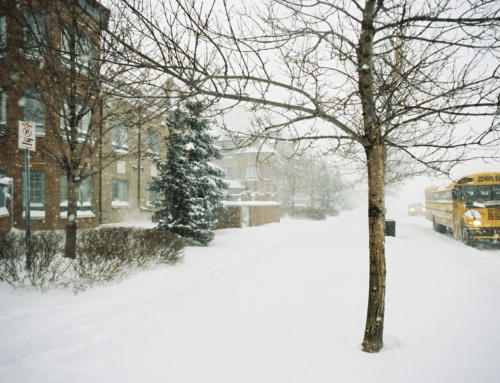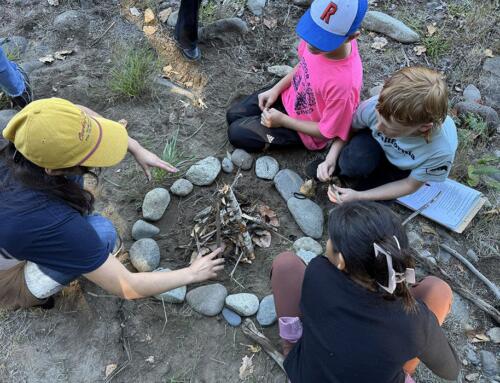Imagine a school gym filled with over 350 elementary students enjoying their monthly assembly. They’re cheering for their classmates as awards are handed out—but there’s no loud chatter; instead, it’s near silent. So quiet you can hear the soft shuffle as students raise their arms, waving their hands back and forth to applause in ASL. The lights are low, no music plays, and students listen carefully as one of their peers, dressed as the school’s bear cub mascot, uses his AAC device to communicate over the microphone. A sensory-safe assembly, highlighting a student with a disability, was a beautiful finale for the first Disability History Month at Whitson Elementary.
During the 2024–2025 school year, ESD 112 Paraprofessionals requested that the White Salmon School District board implement the celebration of Disability History Month, which falls in October each year. Their advocacy, along with the support and expertise provided through ESD 112’s Special Education ESA, set the stage for a month of lessons, conversations, and an assembly that brought tears to many eyes. Through the ESA, the district has access to shared specialists, training, and paraeducator support that help create inclusive, responsive school environments like this one.

Mrs. Chelsea and the Road to Disability Rights
Early in the month, Mrs. Chelsea, the school librarian, prepared lessons focused on the fight for disability rights in the United States. According to Mrs. Chelsea, the most impactful were the discussions she had with the students about what it means to use ‘Person-First Language.’
“There seemed to be a shift in the students, an ‘ah ha’ moment, when they noticed the slight difference in language but the big impact it had.”

The Dellis family with Silus dressed as the school’s Cub mascot
These important conversations helped over 350 elementary students walk into that assembly with a sense of understanding and respect, as their usually clamorous environment was transformed into a sensory safe space. A space where Silus, the 4th grader chosen to be the Cub mascot (who typically sits just outside the gym to avoid the loud atmosphere), felt comfortable to stand in front of his entire school, handing out awards, and with the help of his Para, speak into the microphone with his AAC device.
The most remarkable moment happened as the assembly began to wrap up. Silus pointed to the microphone, then to himself, and typed “the microphone” on his AAC to request to hold it. As the microphone was handed to Silus, he used his natural voice to vocalize a few humming sounds aloud.
Making requests to advocate for himself and using his natural voice are not preferred actions for Silus, and yet he did both with a gym full of his peers looking on. It’s the kind of moment that reminds educators and families why inclusion matters and why shared-service supports like the Special Education ESA help make them possible. And it’s only the beginning. There are many more moments like these to come in future Octobers.





 ESD 112 equalizes educational opportunities for learning communities through innovative partnerships, responsive leadership, and exceptional programs.
ESD 112 equalizes educational opportunities for learning communities through innovative partnerships, responsive leadership, and exceptional programs.